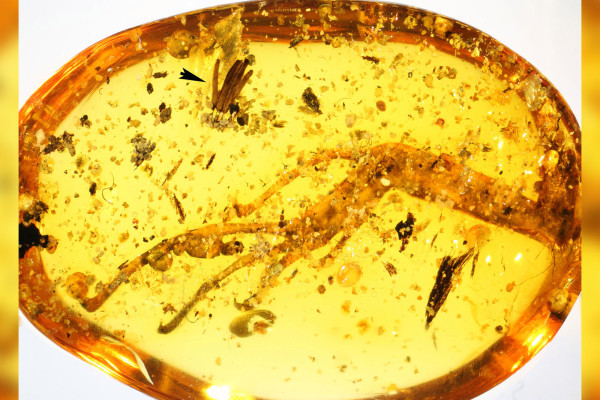琥珀中发现1亿年前的黏液霉菌
琥珀中发现1亿年前的黏液霉菌
Researchers have discovered a 100-million-year-old slime mold and a lizard leg perfectly preserved in amber from a tree in Myanmar, a find described as “unique.”
研究人员在缅甸一棵树上,发现了1亿年前的黏菌和一条保存完好的蜥蜴腿,该发现被称为“独一无二”。
Also known as myxomycetes, these tiny slime molds are single-celled organisms that largely live in soil or rotting wood, feasting on bacteria. Occasionally, they can join together “to form complex, beautiful and delicate fruiting bodies, which serve to make and spread spores,” according to the press release.
这些微小的黏菌也被称为黏菌,它们是单细胞生物,主要生活在土壤或腐烂的木材中,以细菌为食。根据新闻稿,它们偶尔会结合在一起,“形成复杂、美丽和精致的子实体,用于制造和传播孢子”。

Finding fossilized versions of these slime molds is extremely rare, with only two confirmed reports of fruiting bodies found prior, both of which are between 35 million and 40 million years old.
发现这些黏菌的化石版本是极其罕见的,在此之前只发现了两具确认的子实体,都在3500万到4000万年前之间。
“The fragile fruiting bodies were most likely torn from the tree bark by a lizard, which was also caught in the sticky tree resin and finally embedded in it together with the reptile,” said one of the study’s authors, Jouko Rikkinen, in the statement.
研究报告的作者之一Jouko Rikkinen在声明中说:“这些脆弱的子实体很可能是被一只蜥蜴从树皮上撕下来的,这只蜥蜴也被黏在树树脂里,最后和爬行动物一起被埋在树皮里。”
It’s possible that the lizard detached the fruiting bodies from the myxomycetes at an early stage, unlocking information for the researchers to study.
蜥蜴可能在早期就将子实体与黏菌分离,为研究人员提供了信息。
“The fossil provides unique insights into the longevity of the ecological adaptations of myxomycetes,” paleontologist Alexander Schmidt added.
古生物学家亚历山大·施密特补充说:“这个化石为黏菌的生态适应性寿命提供了独特的见解。”
The study has been published in the journal Scientific Reports.
这项研究发表在《科学报告》杂志上。


















